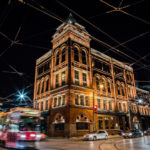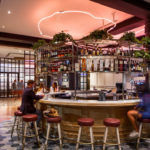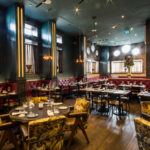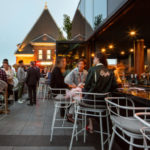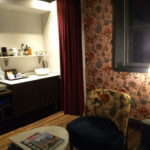RP’s Aubrey Cohen recently had the chance to explore Toronto and found a couple of great examples of embracing and reviving heritage buildings in a contemporary context.
One is The Selby, a high-rise luxury apartment building that Tricon House recently opened in Downtown Toronto. The tower incorporates the Gooderham Mansion, built in 1883 for Charles Gooderham, a member of one of Toronto’s most famous families. It subsequently housed prestigious all-girls school Branksome Hall and then became the Selby Hotel in 1912. Notably, Ernest Hemingway lived in the hotel during his brief career at the Toronto Star in the 1920s. As part of the apartment tower project, the mansion was moved twice, eventually settling east and north of its original site, and then rehabilitated. It now contains a restaurant and retail space on the ground floor, and apartment amenity spaces on the upper two floors, which connect directly to the tower.
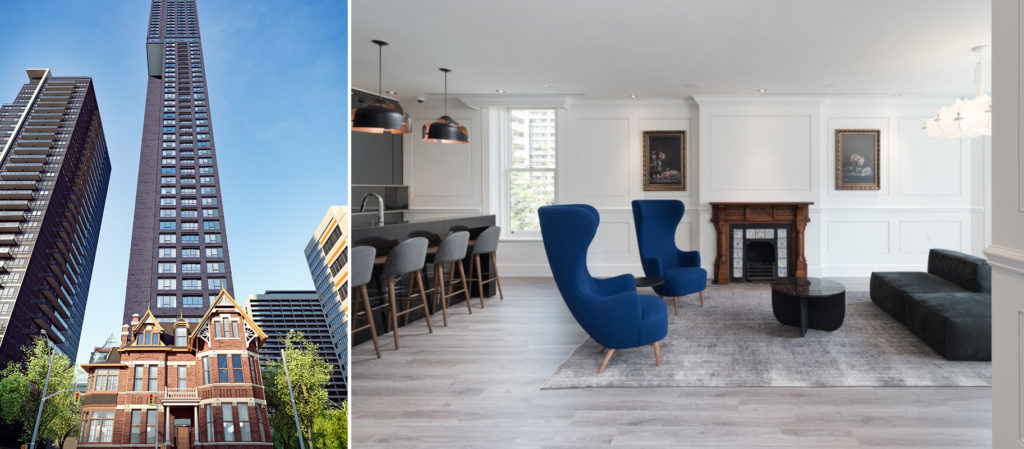
The Selby, showing the mansion and tower from the street (left) and an amenity lounge in the mansion (right)
The Selby’s lobby contains another historic creation – a Steinway & Sons “Victory Vertical” piano. Steinway produced more than 3,000 Victory Verticals from 1941 to 1953. The idea was that the pianos could provide entertainment for troops serving in World War II. In fact, the first Victory Vertical was parachuted onto a battlefield in 1941, complete with tuning equipment and instructions. White was not the original color – the pianos came in olive, blue and gray. Steinway reports one soldier reporting home “Two nights past we received welcome entertainment when a jeep pulling a small wagon came to camp. The wagon contained a light system and a STEINWAY piano. It is smaller and painted olive green, just like the jeep. We all got a kick out of it and sure had fun after meals when we gathered around the piano to sing. … I slept smiling and even today am humming a few of the songs we sang.”
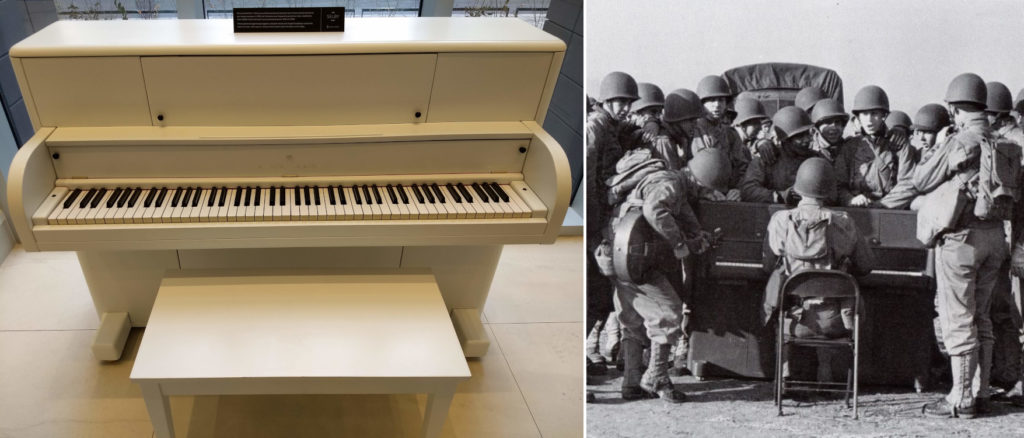
A Victory Vertical piano at The Selby (left) and during World War II (right)
Just east of Downtown Toronto is The Broadview Hotel, whose history is nearly as long as and probably more colorful than that of the Gooderham Mansion. Entrepreneur Archibald Dingman erected what was originally Dingman Hall in 1891, as a commercial center, and it fast became a prominent social gathering spot, according to a history on the hotel’s website. In 1907, Dingman sold the building to T.J. Edwards, who turned it into The New Broadview Hotel. Abbreviating the story somewhat, by the 1970s the hotel had become a boarding house with a strip club on the ground floor (one story about the club involved a live tiger sharing the stage with a dancer).
This part of town, like many urban neighborhoods, has revived in recent years. So Streetcar Developments saw an opportunity, bought the hotel in 2014, and converted it into a hipster hotel with heritage. The Broadview now features a richly decorated restaurant and bright bistro on the ground floor, a stunning indoor-outdoor rooftop bar, still and sparkling water taps on two guest floors, and rooms featuring flowery wallpaper (with matching chairs), dark moldings and curtains, music stations with turntables, and bars stocked with high-end spirits (for a price, of course). Oh, and the restrooms in the rooftop bar honor The Broadview’s racy history with R-rated wallpaper (not shown)!
- The Bellevue Hotel
- Lobby bistro
- Lobby restaurant
- Rooftop bar
- Guest room
